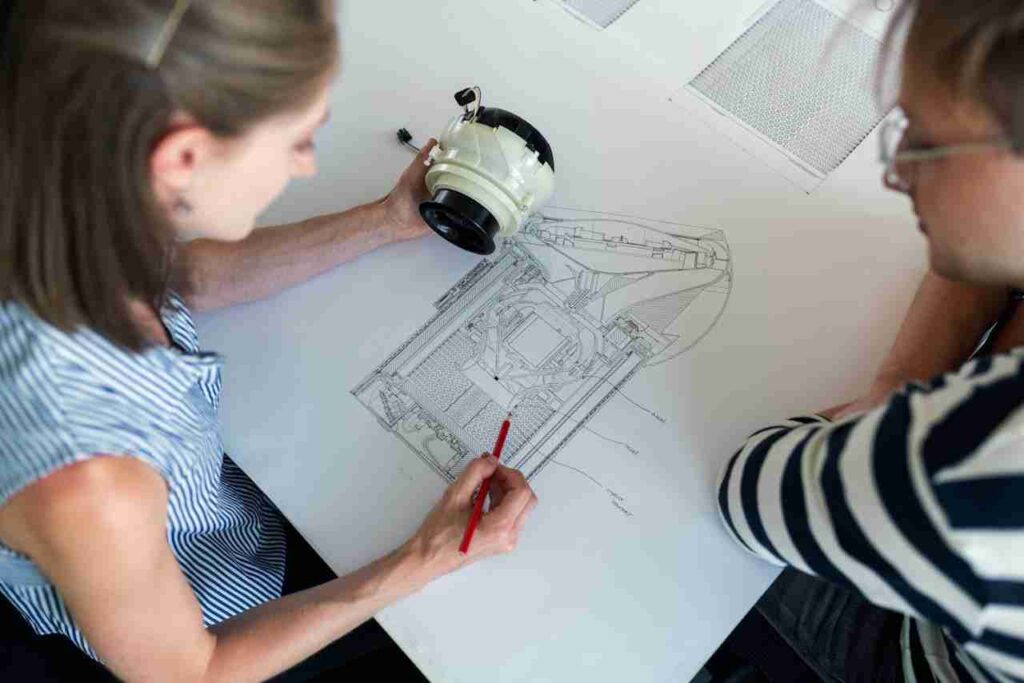Did you know that 42% of startups fail because they build products no one wants? Knowing how to validate your ideas early can save you thousands of dollars and months of wasted effort.
Unfortunately, traditional validation methods often take too long or cost too much. That’s why micro-experiments have become the go-to approach for smart entrepreneurs and product teams. These quick, low-cost tests help you validate ideas before investing significant resources.
Companies like Dropbox, Airbnb, and Zappos all used simple experiments to test their concepts before building full products. Surprisingly, some of their earliest tests took less than a day to set up.
Whether you’re launching a startup, developing a new feature, or exploring an innovative business model, micro-experiments provide concrete data instead of guesswork. They reduce risk while dramatically speeding up your learning cycle.
Ready to stop gambling with your ideas? This guide will show you exactly how to design, run, and learn from micro-experiments that actually work.
What Are Micro Experiments and Why They Work
Micro experiments represent a fundamental shift in how to validate your ideas in business and product development. These small-scale tests provide structured approaches to exploring and validating concepts without requiring extensive resources or time commitments.
Definition and core principles of micro experiments
Micro experiments are small-scale tests conducted to explore and validate ideas and strategies with minimal investment. At their core, these experiments involve implementing specific hypotheses on a manageable scale to gather data and insights quickly. According to experts, a proper micro experiment contains several essential elements:
- A clearly stated question or hypothesis that needs answering
- A controlled test designed to answer that question
- Established conditions under which the test will run
- Predetermined criteria for evaluating results
- A process for drawing conclusions based on evidence
Essentially, micro experiments align with hypothesis-driven development—a scientific, fact-based approach that uses agile principles to validate or disprove a hypothesis in complex problem domains. Rather than building solutions based on assumptions, this method prioritizes learning through rigorous examination using multiple approaches.
How do micro-experiments differ from traditional testing?
Traditional testing methods often require significant resources, lengthy timelines, and substantial upfront investments. In contrast, micro experiments operate on an entirely different principle—”fail fast, learn fast.”
Traditional methods typically involve:
- Waiting for full development cycles before gathering feedback
- Relying on manual processes that introduce human error (with error rates that can lead to both unnecessary investigations and undetected issues)
- Requiring extensive time for results to become visible (often 24+ hours compared to 6-8 hours with faster methods)
- Focusing on validating completed work rather than testing assumptions early
Micro experiments differ fundamentally by emphasizing quick validation cycles. Unlike Proof of Concepts (PoCs) that demonstrate the feasibility of a single approach, micro experiments examine multiple possibilities. Furthermore, they’re distinct from Minimum Viable Products (MVPs), which provide enough features to attract early adopters. Micro experiments instead focus on testing specific hypotheses with intense evaluation.
Why speed and simplicity matter
In today’s competitive landscape, speed and simplicity in validation activities provide distinct advantages. Micro experiments deliver rapid feedback loops, allowing teams to learn quickly and make informed decisions.
Teams leveraging micro experiments typically dedicate just 1-2 weeks to execute their approaches and analyze outcomes, resulting in reduced time-to-production by up to 50%. This acceleration happens because:
- Small-scale tests require fewer resources to implement
- Simple designs allow for faster execution
- Quick evaluation cycles enable rapid iteration
- Failed experiments identify dead ends early, preventing wasted effort
Additionally, simplicity matters because it removes barriers to experimentation. When tests are simple enough to implement quickly, teams can run more of them, increasing the chances of discovering valuable insights. As demonstrated by Booking.com, which runs approximately 1,000 experiments simultaneously, the approach recognizes that 9 out of 10 experiments will fail—but the successful ones drive business forward.
The emphasis on speed doesn’t mean rushing or cutting corners. Rather, it reflects a fundamental understanding that learning cycles accelerate progress. Each micro experiment provides data points that, as with Bayesian reasoning, update prior knowledge to improve future decisions.
Key Benefits of Micro Experiments
Businesses implementing micro-experiments consistently report significant advantages over traditional testing methods. Beyond theoretical benefits, these small-scale tests deliver measurable improvements across multiple dimensions of organizational performance.
Lower risk and cost
Micro-experiments fundamentally reduce business risk by limiting resources invested in unproven concepts. Since ideas are validated through structured, measurable processes rather than individual hunches or ego-driven projects, teams avoid costly investments in solutions nobody wants. This approach minimizes wasted time and resources while maintaining the ability to explore innovative possibilities.
The financial efficiency comes from focusing exclusively on intentional, purposeful experiments instead of developing superfluous features that provide little benefit to end-users. Moreover, micro-experiments create a “safe to fail” environment where disappointing results become valuable learning opportunities rather than expensive mistakes. This safety net allows organizations to test multiple approaches simultaneously without committing substantial resources to any single path.
Notably, these experiments thoroughly vet potential failure paths, ensuring teams gain expertise in both successful and unsuccessful approaches. Consequently, when larger investments are made, they proceed with greater confidence and fewer unexpected complications.
Faster learning cycles
One of the most compelling advantages of micro-experiments is dramatically accelerated learning. Teams leveraging this approach typically dedicate just 1-2 weeks to execute and analyze results, subsequently reducing time-to-production by up to 50%. This acceleration occurs primarily because:
- Experiments provide rapid feedback loops
- Teams quickly identify and abandon unsuccessful paths
- Learning happens through practical application rather than theoretical analysis
- Each experiment builds upon insights from previous tests
Furthermore, this iterative testing ensures products and processes are refined before full-scale launch. The approach aligns with what McKinsey research describes as the digital economy’s preference for first movers and fast followers, where being first to market with a good product that has some rough edges often outperforms delivering a perfectly polished product too late.
Encourages innovation and creativity
Micro-experiments create organizational environments where innovation thrives. Through structured testing, teams are encouraged to think beyond conventional solutions and explore multiple possibilities simultaneously. This experimental mindset views failures as valuable learning opportunities rather than setbacks.
As demonstrated by companies like Netflix and Spotify, decentralizing decision-making through experimental approaches enables rapid testing without bureaucratic slowdowns. Spotify’s squad model exemplifies this benefit by giving teams full ownership over features, allowing them to test and iterate without waiting for top-down approval.
The approach fosters what McKinsey calls “innovation garages”—cross-functional teams empowered to generate new ideas with minimal overhead. These environments break down silos that typically stifle rapid innovation, bringing together diverse perspectives to solve problems quickly.
Improves team motivation
Perhaps surprisingly, micro-experiments significantly impact team psychology and motivation. When organizations celebrate both successful experiments and valuable failures, they create environments where teams feel empowered to test bold ideas without fear.
This psychological safety proves essential for sustained innovation. When leaders model experimental thinking by sharing both wins and failures, they encourage creativity and risk-taking at every level of the organization <sup>[[11]](https://cxl.com/blog/building-a-culture-of-experimentation/)</sup>. Additionally, micro-experiments empower individuals by giving them direct influence over product development through evidence-based decision-making.
The concrete, measurable nature of these experiments also sustains motivation throughout the development process. Teams experience satisfaction from quick wins and valuable learnings rather than waiting months to see the impact of their work.
How to Design and Run a Micro Experiment
Designing effective micro-experiments requires methodical planning and clear structure. The process itself becomes simpler with practice, eventually becoming second nature for teams committed to evidence-based decision-making.
Start with a clear hypothesis
The foundation of any successful micro-experiment begins with a well-crafted hypothesis. This structured prediction connects your test to measurable outcomes and prevents testing based solely on individual hunches or ego. A proper hypothesis follows a simple format: “By doing X, we expect Y to happen, which benefits Z because…”
For instance, a technology team might hypothesize: “By using Azure App Services for code deployment, we expect developers to require little-to-no knowledge around app hosting and operations, which will allow us to focus on exceeding customer expectations”.
Effective hypotheses share several key characteristics:
- They connect directly to customers, problems, solutions, value, or growth
- They define the smallest intentional outcome that will prove or disprove an idea
- They remain simple and direct, avoiding complex assumptions
- They establish clear links between actions and expected results
Remember that hypotheses should be both testable and falsifiable – meaning you can design an experiment to test it, and it can potentially be proven wrong. This scientific approach ensures your experiments generate meaningful insights regardless of outcome.
Choose a small, testable action
After establishing your hypothesis, identify the smallest possible action that will test it. The key is maintaining focus – your micro-experiment should examine only the specific variable you’re testing while keeping everything else constant.
Importantly, micro-experiments need not adhere to the same code disciplines and rigor that production code requires Keep design and implementation concise and simple, focusing solely on the outcome to be measured.
When planning implementation, decide whether the same team should handle all approaches or if different teams should tackle different aspects. Weigh these options against your team’s capabilities and maturity. Teams using micro-experiments typically dedicate just 1-2 weeks to execute their approaches and analyze outcomes.
Define success metrics
Metrics provide quantitative measures of your experiment’s success. They tell you whether variations are winning, losing, or inconclusive based on changes in user behavior. Every micro-experiment needs at least one metric, though you can add or modify metrics throughout the process.
Start by selecting a primary metric – this determines whether your experiment “wins” or “loses” and should directly reflect your hypothesis. Secondary metrics provide deeper insights into user behavior and long-term success. Additionally, include guardrail metrics to ensure your experiment doesn’t create unintended negative effects elsewhere.
For comprehensive evaluation, use both:
– Direct behavioral metrics (measuring immediate user actions)
– Business outcome metrics (measuring broader impact)
Before finalizing your metrics, validate them in plain language to ensure they truly measure your experiment’s success <sup>[[1]](https://www.statsig.com/perspectives/experimenting-with-kpis-metrics)</sup>. Ask yourself: “Do these metrics actually measure what I’m trying to learn?”
Collect and analyze feedback
The final crucial step involves systematically collecting and analyzing all feedback from your experiment. Capture both significant and insignificant details in a structured format, creating what some practitioners call a “Learning Matrix”.
Importantly, failures provide equally valuable – if not more important – insights than successes. Document everything thoroughly without judgment during the collection phase; evaluation comes later.
For effective feedback analysis, consider these approaches:
- Categorize feedback into relevant groups for easier analysis
- Look for patterns and unexpected outcomes
- Use both qualitative and quantitative data
– Consider implementing AI-powered analysis for larger datasets
After collecting data, analyze what you’ve learned by asking: What were the observations? How might these learnings be leveraged for future work? This systematic approach transforms even “failed” experiments into valuable stepping stones toward your ultimate goal.
Popular Micro Experiment Techniques
The toolkit for validating ideas rapidly continues to evolve, offering entrepreneurs practical ways to test assumptions without substantial investment. Several field-tested techniques have emerged as particularly effective for quick validation.
Landing pages and fake doors
Fake door testing (also called painted-door testing) involves creating the illusion of a product before building it. This technique presents users with buttons or links to features that don’t exist yet, followed by a message explaining the feature is in development. Research shows this approach helps companies gage interest in new offerings, allowing them to collect valuable data on user behavior and potential popularity before investing in development. Types include pre-order forms, landing page simulations, “coming soon” teasers, and feature preference surveys.
Email and ad campaigns
A/B testing through email campaigns enables systematic validation of different value propositions. You can determine which messaging resonates best by sending variations to different subscriber segments. Companies testing elements from subject lines to template designs have seen click-through increases up to 127%. Similarly, targeted ad campaigns can test messaging across platforms like Google or Facebook, providing quick feedback on market positioning.
Pre-orders and letters of intent
Pre-orders represent perhaps the strongest validation technique – customers voting with their wallets. Kettle & Fire validated their bone broth concept by creating a simple landing page and measuring interest before production. Crowdfunding platforms extend this approach, allowing products to secure funding while validating demand. Letters of intent serve a similar function in B2B contexts, demonstrating serious commitment from potential clients.
Concierge and Wizard of Oz MVPs
These approaches simulate automation through manual effort. Concierge MVPs openly provide personalized, manual service, whereas Wizard of Oz MVPs appear automated but have humans working behind the scenes. Wealthfront started with human investment advisors before building their robo-advisor platform, now managing approximately $50 billion in assets.
Short, engaging explainer videos communicate value propositions quickly. These videos, whether animated or live-action, can test concept appeal before building products. Distributing them through social media platforms offers additional validation opportunities, as engagement metrics provide immediate feedback on market interest.
Common Pitfalls and How to Avoid Them
Even the best-designed micro-experiments can fall short without careful attention to common pitfalls. Recognizing these challenges ahead of time helps teams validate ideas more effectively.
Avoiding confirmation bias
Confirmation bias remains one of the most dangerous traps in experimental validation. Scientists understand this bias strengthens as we invest more time and energy in our research, often making us the least objective person to interpret the results. This tendency causes us to unconsciously search for evidence supporting our beliefs while ignoring contradictory data.
To combat this:
- Document your assumptions before seeing results
- Have team members review your analysis who didn’t participate in designing the experiment
- Actively look for evidence that might disprove your hypothesis
- Create specific criteria for success before running tests
Balancing short-term and long-term goals
According to research, 70% of professionals struggle to balance immediate demands with long-term objectives. When running micro-experiments, this tension appears as pressure to show quick wins versus building sustainable solutions.
Overcome this challenge by creating a dedicated innovation roadmap that outlines both short-term milestones and long-term vision. Regularly review and adjust plans to ensure you remain adaptable while staying focused on your primary objectives.
Managing team alignment and resources
Misalignment makes teams harder to control and can cause them to drift off course. Without proper alignment, organizations face isolated work efforts alongside duplicated tasks as members work in contradictory directions.
Establish clear ownership of experiment components and ensure leadership teams communicate cohesively about shared priorities. This prevents conflicting directives that can stall cross-functional projects.
Interpreting results in context
Misinterpreting data leads to poor business decisions. To avoid this, analyze your data with a structured approach and have others review your analysis. If results seem too good (or bad) to be true, consider replicating the experiment before making major decisions.
Conclusion
Micro-experiments represent a paradigm shift in how to validate your ideas that smart entrepreneurs and product teams can no longer afford to ignore. This guide shows how these small-scale tests provide concrete data instead of relying on guesswork or assumptions.
First and foremost, these experiments drastically reduce financial risk and time investment. Rather than committing months of development to unproven concepts, teams can validate ideas quickly and decisively. This approach allows organizations to fail fast when necessary and pivot toward more promising directions.
Speed certainly matters in today’s competitive marketplace. Companies that master micro-experimentation typically cut their time-to-production by up to 50%, giving them significant advantages over competitors still using traditional validation methods. Likewise, this rapid learning cycle creates environments where innovation naturally flourishes.
The process itself follows a straightforward formula: develop a clear hypothesis, test it with minimal resources, measure results against defined metrics, and learn from the outcome, regardless of whether it succeeds or fails. Essentially, each experiment becomes a stepping stone toward better products and services.
Additionally, teams gain psychological benefits from this approach. When both successes and valuable failures receive recognition, motivation increases naturally. Team members feel empowered to contribute ideas without fear of punishment for unsuccessful tests.
Remember, companies like Dropbox, Airbnb, and Zappos all started with simple experiments before building their full products. Their success demonstrates how powerful this methodology can be when applied consistently.
Therefore, stop gambling with your ideas. Whether launching a startup, developing new features, or exploring innovative business models, micro-experiments provide the validation framework needed for confident decision-making. Begin with small tests, learn continuously, and watch your success rate climb as guesswork gives way to evidence-based development.
“`


























Heads up, everyone! Gave vf555com a try and was pleasantly surprised by their user-friendly interface. Depositing and withdrawing cash was a breeze. Give it a spin if ya wanna! vf555com
666betslot! Sounds ominous, but eh, it’s just slots. Fun, quick, and easy. If you’re into slots, give it a whirl: 666betslot
Finally found the official site for BHT Club! bhtclubofficial.net seems legit. Everything works as expected. Give it a look if you’re looking to join! Go to bhtclubofficial
Hey guys, just tried out spinph7. Not bad, not bad at all! Solid selection of games and things ran pretty smoothly. I’d give it a go if you’re looking for something new. Check it out here: spinph7
Jilievo7? Alright! I’ve been hitting that site for a while now. Good selection of games, nothing groundbreaking, but solid entertainment. Could use some better promos, though, ya know? Still, a decent place to kill some time and maybe win a few pesos. Check it out at jilievo7.